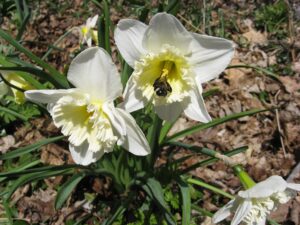Maybe it’s the start of Spring in the northern hemisphere, but this month I’m noticing stories about how we learn from nature.
Thinking about ourselves and the communities in which we live and work as living systems. How do we prepare for the natural cycles of growth; how do we attend to our roots; how do we attract pollinators and work with pests?
In this first podcast we have Professor Bill Rees, a systems ecologist, in conversation with Dr Nate Hagans, an energy transition futurist.
Bill talks about the fundamental flaw in how we study living systems – that our history of ecology and economics separates the study of human and non-human systems, when they are fundamentally inter-related. This means our studies of how human systems work “pay no attention to the ecosystems within which the economy interacts”; and equally ecology doesn’t take account humans being the primary consumer in any major ecosystem.
What we need is more ecologists to study the implications in our economies and human systems, and economists to work with the whole non-human world.
Economists and ecologists to co-operate and learn and study together.
Andrew Curry picks up on this point about professions and disciplines interacting in his review of David Epstein’s book Range and an article in Nature. The former pulling on evidence that working with complexity requires the capacity to work across disciplines, to work with people who bring a different frame of reference, and that generalists who have built careers working across a range of professions and sectors, are more capable of doing this. The Nature article saying the decline in transformative science comes from the tendency to get funding for depth rather than breadth, sticking to specific disciplines rather than inter-disciplinary work.
Then in the On Being podcast with Janine Benyus in conversation with Krista Tippett, we are introduced to Janine’s core concept of biomimicry – how we as humans can learn from living systems, innovation that is inspired by the vitality of nature.
The surprising insight here comes back to a key question of our time.
Working on complex, interconnected problems where patterns don’t repeat and uncertainty is a core feature, we have to learn, we have to innovate, and we have to co-operate.
Yet our socio-economic systems are fundamentally based on competition.
Janine says this in part influenced by misconstruing the Darwinian theory of evolution as ‘the survival of the fittest’. It is not ‘of the fittest’ which we take as strongest and most capable of fighting, it is ‘of the fit’:
“Which means: fit to place, fit to your community. Because he understood, studying evolution and all, coming up with natural selection — he understood that organisms don’t just move into a place; they co-create a place and then the place creates them, and then they create the place. And so that’s this idea of …..fittedness. To fittedness, so that the habitat changes. It changes all the time. And so you have to go …..conditions have changed. I’m no longer fit to this place, but I’m going to evolve my behaviors, and physiologically, I’m going to evolve to become more and more at home here.”
Hoping that now we have more daylight hours in the northern hemisphere, wherever you are, you can take the time to get outside, notice what’s occurring around you and breathe in.
(With thanks to Gwendolyn Dolores Casazza for this final link)
